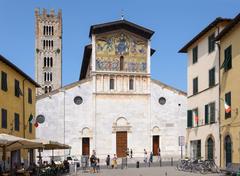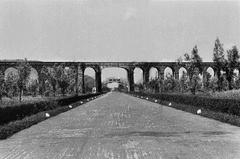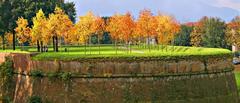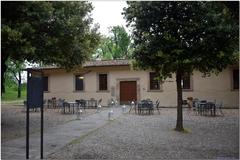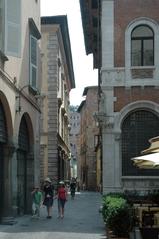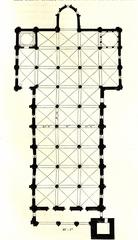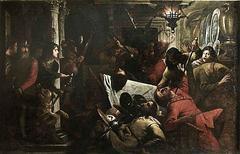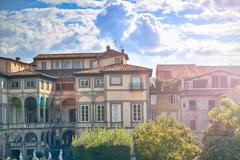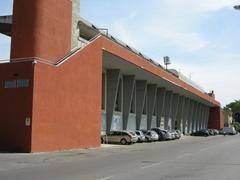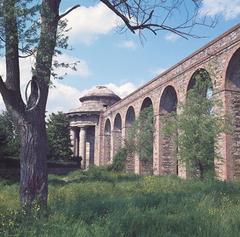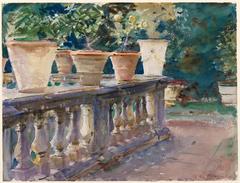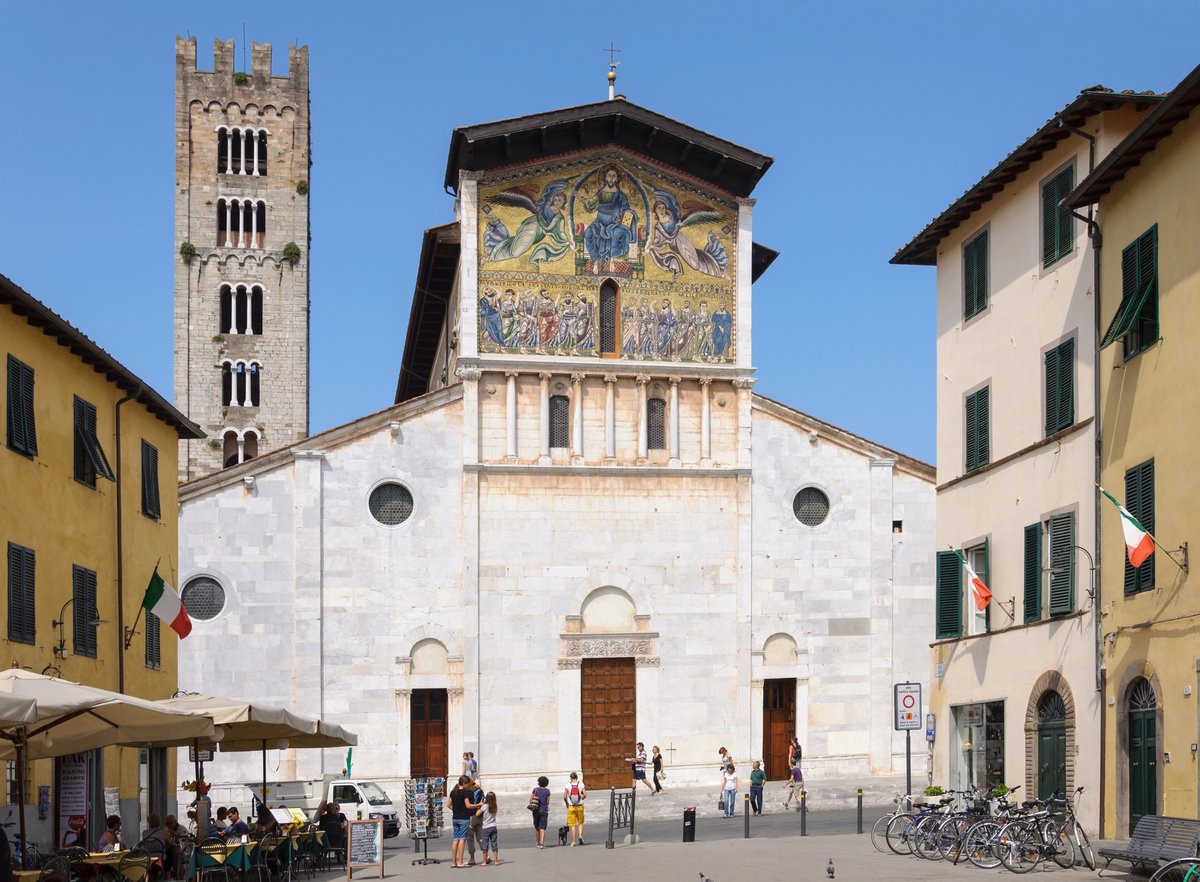
Basilica of San Frediano Lucca: Visiting Hours, Tickets, and Historical Significance
Date: 15/06/2025
Introduction
The Basilica of San Frediano stands as one of Lucca’s most captivating historical and architectural treasures, renowned for its ancient foundations, Romanesque grandeur, and artistic heritage. Founded in the 6th century by the Irish bishop San Frediano, the basilica reflects over 1,400 years of religious devotion and cultural evolution. Its 13th-century golden mosaic façade, depicting the Ascension of Christ, is a rare example of Western Byzantine-style mosaics, symbolizing Lucca’s connections to diverse artistic traditions (Lucca Tourism, Visit Tuscany).
Inside, visitors encounter a wealth of medieval and Renaissance art, including priceless frescoes, a celebrated baptismal font, and the revered incorrupt body of Saint Zita, Lucca’s beloved patroness. As an active place of worship and an important stop on the Via Francigena pilgrimage route, the basilica remains deeply embedded in the spiritual and communal life of Lucca (Via Francigena, Catholic Shrine Basilica).
This guide provides essential information for visitors, including historical context, practical visiting hours, ticketing details, accessibility, nearby attractions, and tips to make the most of your experience. Whether you are a history enthusiast, art lover, pilgrim, or curious traveler, the Basilica of San Frediano offers a unique glimpse into Tuscany’s medieval soul and religious traditions (Lucca Tourism).
Historical Overview
Origins and Early Foundations (6th–8th Century)
The basilica traces its roots to the early 6th century, founded by San Frediano (Saint Fridianus), an Irish priest who became Lucca’s bishop between 560 and 588 AD. Originally dedicated to Saints Vincenzo, Stefano, and Lorenzo, the church became a central site for early Christian worship in the city. Archaeological evidence beneath the current structure confirms the basilica’s continuous sacred use for nearly 1,500 years (lucca.com, catholicshrinebasilica.com).
Under Lombard rule, the church was expanded and known as the Basilica Longobardorum, reflecting its significance during this era. After San Frediano’s death and burial in the crypt, the church was rededicated in his honor, further cementing his legacy in Lucca’s spiritual history.
Romanesque Transformation and Medieval Growth (11th–13th Century)
The current basilica dates largely to the Romanesque period, with major reconstruction between 1112 and 1147. The church’s consecration by Pope Eugene III in 1112 established it as a spiritual center in Lucca (lucca.com). The robust Romanesque style is evident in its stone construction, arches, and classical elements (catholicshrinebasilica.com).
A defining feature is the 13th-century golden mosaic on the façade, depicting the Ascension of Christ, surrounded by apostles—a masterpiece of Byzantine influence in Western Europe (lucca.com).
Expansion and Artistic Flourishing (14th–16th Century)
Further expansion in the 14th to 16th centuries saw the addition of chapels commissioned by Lucca’s noble families, transforming the basilica’s interior with ornate frescoes, altarpieces, and Renaissance elements. The layout evolved to accommodate these chapels, creating a unique architectural complexity and a rich artistic environment (catholicshrinebasilica.com, lucca.com).
Artistic Heritage and Notable Features
- Façade and Mosaic: The east-facing white limestone façade is crowned by a monumental golden mosaic by Berlinghiero Berlinghieri, a rare exterior mosaic in Italy.
- Romanesque Baptismal Font: The 12th-century font, believed to be by Robertus Magister, features biblical reliefs, including scenes from the life of Moses.
- Interior Chapels: The Chapel of Santa Zita houses the incorrupt body of Lucca’s patroness, while other chapels, such as the Tenta Family Chapel, display Renaissance sculptures by Jacopo della Quercia and frescoes by Amico Aspertini.
- Reused Roman Elements: Columns and capitals from ancient Roman buildings reflect Lucca’s classical heritage and are integrated throughout the nave.
Religious and Cultural Significance
The basilica is a focal point for Lucca’s major religious celebrations, notably the annual Holy Cross procession on September 13, underscoring its enduring spiritual importance (catholicshrinebasilica.com). It is also the resting place of notable figures like Richard the Pilgrim and Saint Zita, strengthening its reputation as a pilgrimage destination (catholicshrinebasilica.com).
San Frediano’s role as both a spiritual and civic icon is celebrated in local festivals such as the Festa di Santa Zita, which transforms the piazza into a flower market and highlights the blending of religious and community traditions (Lucca Events).
Visiting the Basilica of San Frediano
Opening Hours
- Monday to Saturday: 9:00 AM – 6:00 PM
- Sunday and public holidays: 12:00 PM – 6:00 PM
- Note: Hours may vary on religious holidays or special occasions. Always check the official website before visiting.
Tickets and Admission
- Admission: Entry is generally free; a voluntary donation is encouraged to support preservation. Some special exhibitions or guided tours may require a ticket (typically around €3 per person).
- Booking: Advance booking is usually not necessary except during peak seasons or for large groups.
Accessibility
- Wheelchair access: Ramps are available at main entrances; some interior areas may have uneven flooring or limited access.
- Facilities: On-site facilities are minimal; public restrooms and cafés are nearby.
Location & Getting There
- Address: Piazza San Frediano, 55100 Lucca, Italy
- By Foot: About 1.3 km (15–20 min walk) from Lucca train station.
- Public Transport: LAM Verde bus, stop San Frediano 1, is directly in front.
- Parking: Available near the city walls.
Visitor Tips
- Dress Code: Modest attire is required; bring a scarf or shawl.
- Photography: Allowed without flash or tripods; be discreet during services.
- Best Times: Visit early morning or late afternoon to avoid crowds, especially in spring and autumn.
- Guided Tours: Available through local operators or official tourism channels for deeper historical and artistic insight.
Key Interior Highlights
- Chapel of Sant’Agostino: Features 16th-century frescoes by Amico Aspertini.
- Tenta Family Chapel: Exhibits Renaissance sculpture and tombstones by Jacopo della Quercia.
- 12th-century Baptismal Font: A masterpiece of Romanesque carving.
- Saint Zita’s Relics: The glass-encased mummy of Lucca’s patron saint.
- Roman Spolia: Ancient stone blocks and columns incorporated into the basilica’s architecture.
Special Events and Religious Services
- Luminara di Santa Croce (September 13): The basilica is the starting point for Lucca’s famous candlelit procession.
- Festa di Santa Zita (April 27): Annual celebration with flower markets and processions.
- Regular Masses and Liturgical Services: Open to visitors; observe silence and modesty during services.
Nearby Attractions
- Piazza dell’Anfiteatro
- Guinigi Tower
- Lucca Cathedral (San Martino)
- Via Fillungo (shopping and cafés)
- Renaissance city walls
Easily explored alongside the basilica in Lucca’s compact historic center.
Frequently Asked Questions (FAQ)
Q: What are the Basilica of San Frediano’s opening hours?
A: Monday–Saturday: 9:00 AM–6:00 PM; Sunday/public holidays: 12:00 PM–6:00 PM. Confirm hours before visiting, as they may change during festivals.
Q: Is there an entrance fee?
A: General admission is free; donations are welcome. Special events or guided tours may require a ticket (approx. €3).
Q: Do I need to book tickets in advance?
A: Usually not, except during peak tourist periods or for large groups.
Q: Is the basilica wheelchair accessible?
A: Yes, with ramps at entrances, though some interior areas may be uneven.
Q: Can I take photos inside?
A: Yes, but please avoid flash and tripods, and be respectful during religious services.
Q: Are guided tours available?
A: Yes, through local operators or official Lucca tourism channels.
Visual Suggestions
- Façade with golden mosaic: Alt tag: “Golden mosaic of the Ascension on Basilica of San Frediano facade”
- Interior nave and columns: Alt tag: “Romanesque interior and frescoes of Basilica of San Frediano”
- Baptismal font: Alt tag: “12th-century baptismal font with biblical scenes in Basilica of San Frediano”
- Chapel of Santa Zita: Alt tag: “Saint Zita relics in Basilica of San Frediano”
Practical Summary and Traveler Tips
The Basilica of San Frediano is an essential highlight of Lucca’s historical and cultural landscape—offering visitors a blend of architectural magnificence, artistic treasures, and vibrant religious traditions. Its central location makes it an ideal starting point for exploring other Lucca landmarks. For the latest updates on visiting hours, ticketing, and special events, consult official tourism channels (Lucca Tourism).
Download the Audiala app for audio guides, plan your visit around local festivals for a richer experience, and enjoy discovering the sacred art and living traditions of this remarkable basilica.
